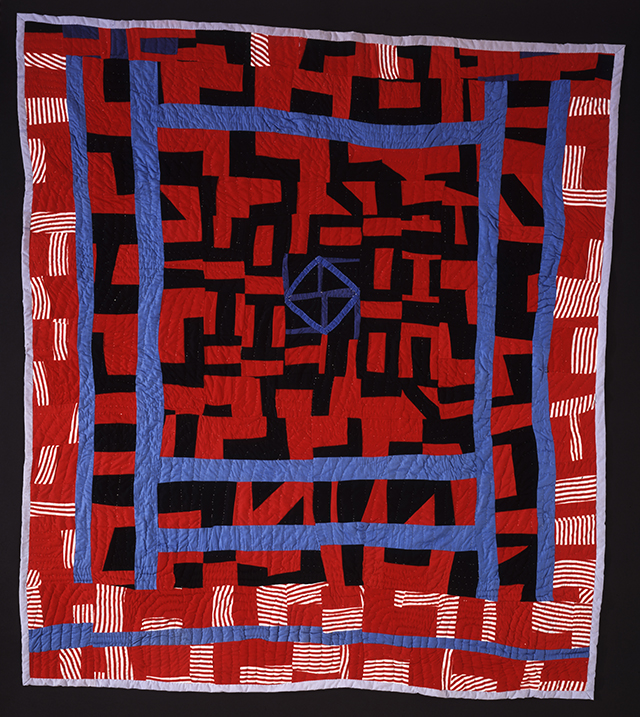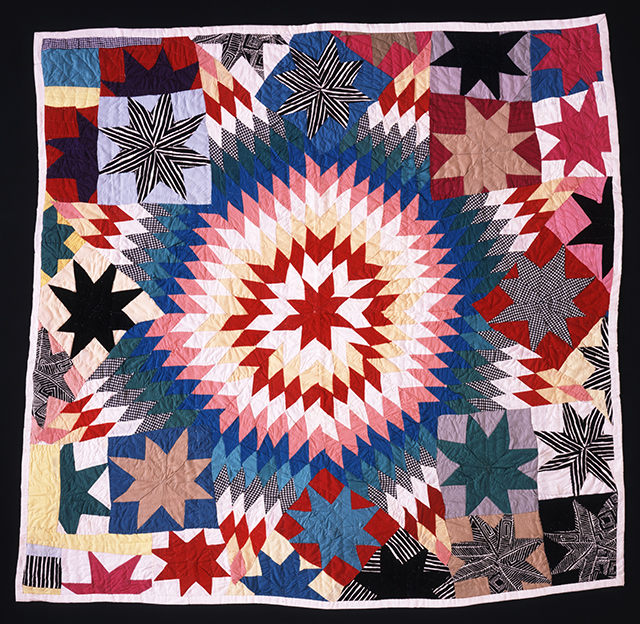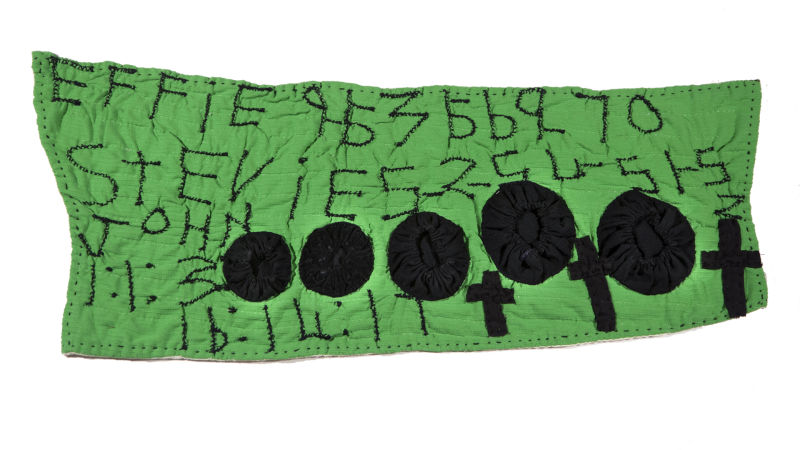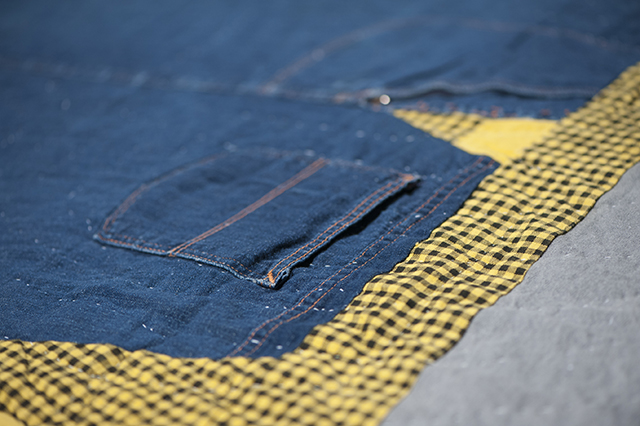A quilt at its most basic is three layers (quilt top, backing and batting—that’s the layer of insulation between the top and bottom layers) connected by the process of stitching a pattern through all three. Within that structure, a quilt can be many things—a functional necessity, a memorial, an heirloom or a work of art. Yo-Yos and Half Squares: Contemporary California Quilts, an exhibition of improvisational quilts from the collection of Eli Leon, proves those categories are not exclusive.

The artists behind this Oakland Museum of California (OMCA) exhibition—Angie Tobias, Arbie Williams, Mattie Pickett, Rosie Lee Tompkins and Sherry Byrd—are all African-American women who at one time resided in the Bay Area. Their quilts are vivid, free-form and anything but soporific. They incorporate nontraditional materials like crushed velvet, denim and beaded belts, and make wild departures from traditional patterns.
Unlike many art forms, where a sketch or an underpainting allows the artist to imagine their work in its finished state long before that moment of completion, an improvised quilt unfolds as it is made, each piece changing the balance and shape of the composition as a whole. In painting terms, quilting is like stitching together a canvas, piece by pre-painted piece.
While some quilts play with color, material and print, the works on view at OMCA abandon tradition almost entirely. Instead of time-honored arrangements of geometric shapes, quilts like Texas Star (pieced by Mattie Pickett, quilted by Willia Ette Graham) reference the familiar without succumbing to it. The result is thrilling: the tight starburst arrangement gradually crumbles into diamonds of pulsating color as it moves to the outer edges of the fabric.

Collector Eli Leon’s particular passion for quilts began while he was pursuing another passion: collecting green things. The entry to Yo-Yos and Half Squares is a portal of shiny green plastic. Inside the exhibition a green-painted space showcases a quilt of Leon’s own making, along with what I presume to be a very small sampling from his stockpile of green objects.



